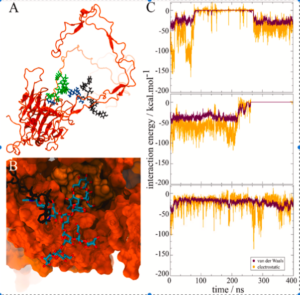Filamentous fungi are cell factories traditionally used for enzyme production in various industrial sectors, including food and beverages, biopolymers, biofuels, and animal feed. Despite significant progress in optimizing enzyme production, challenges related to cost-effectiveness persist. Genes involved in the fungal secretory pathway have been modified to address productivity barriers, including post-translational modifications such as N-glycosylation of proteins. N-glycosylation can significantly affect protein stability, production yield, and functionality. This study investigated the isolated and combined deletion of genes involved in N-glycan assembly on protein production in Aspergillus nidulans. To test this hypothesis, we utilized CRISPR/Cas9 technology to knock out 14 genes related to N-glycan assembly (AN5888, AN11802, AN5346, AN6874, AN5725, AN7425, algC, algI, algL, algF and AN5748) and protein quality control (clxA, gtbA, and AN4623), resulting in eight viable mutants. Next, we integrated a GH3 beta-xylosidase encoding gene (bxlb; AN8401) into these mutants and the reference strain for constitutive expression and secretion. Single deletion of most target genes did not affect protein secretion and fungal growth. Interestingly, the specific activity of BxlB in the secretome of single mutants was influenced by culture time, while BxlB secretion remained unaffected. Conversely, the combined deletion of algC and algI increased BxlB secretion, whereas the kinetic parameters remained unaffected relative to the enzyme produced by the reference strain. Multiple deletions of algC, algF, and algI did not affect BxlB secretion but reduced catalytic efficiency. After analyzing the secretomes of double and triple mutant strains produced on plant biomass using mass spectrometry, we observed that these knockouts reduced the overall secretion of a specific set of carbohydrate-active enzymes (CAZymes). Other clusters were upregulated in the mutant strains, indicating severe secretome alterations. Overall, the combined deletion of algC and algI may be a promising strategy for increasing the secretion of recombinant proteins in A. nidulans while also enhancing downstream processes, such as protein purification, by reducing the protein background in the secretome of the mutant strain.

Jaqueline Aline Gerhardt, Marcelo Ventura Rubio, Cesar Rafael Fanchini Terrasan, Natalia Sayuri Wassano, Aryadne Rodrigues, Fernanda Lopes de Figueiredo, Everton Paschoal Antoniel, Fabiano Jares Contesini, Artur Hermano Sampaio Dias, Uffe Hasbro Mortensen, Munir Salomão Skaf, André Damasio, Improving recombinant protein secretion in Aspergillus nidulans by targeting the N-glycosylation machinery, Metabolic Engineering Communications, Volume 20, 2025, e00264, ISSN 2214-0301, https://doi.org/10.1016/j.mec.2025.e00264. (https://www.sciencedirect.com/science/article/pii/S2214030125000082)

